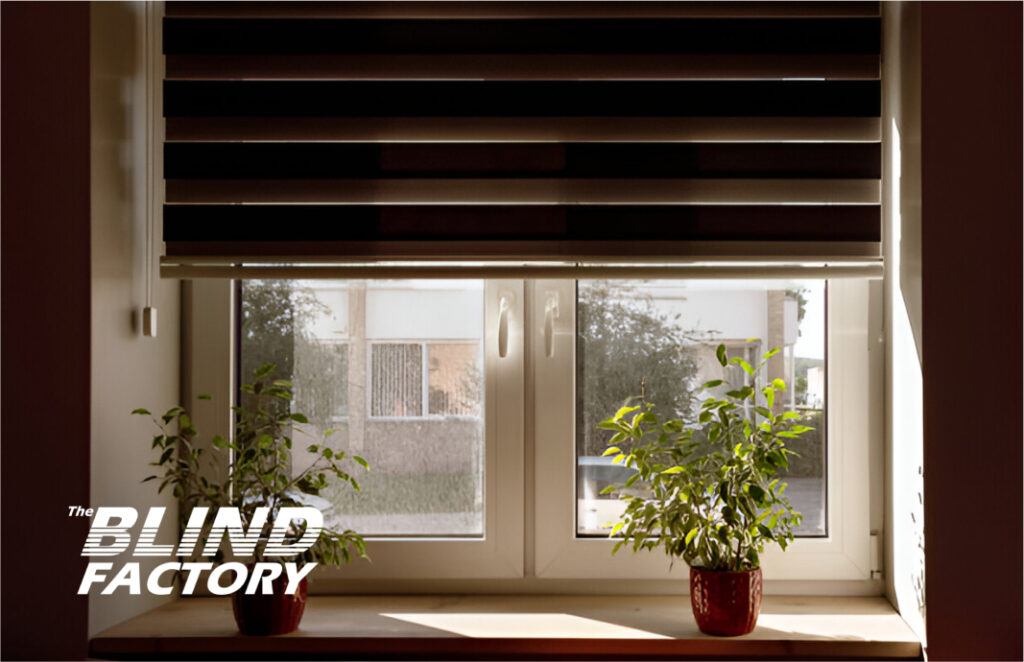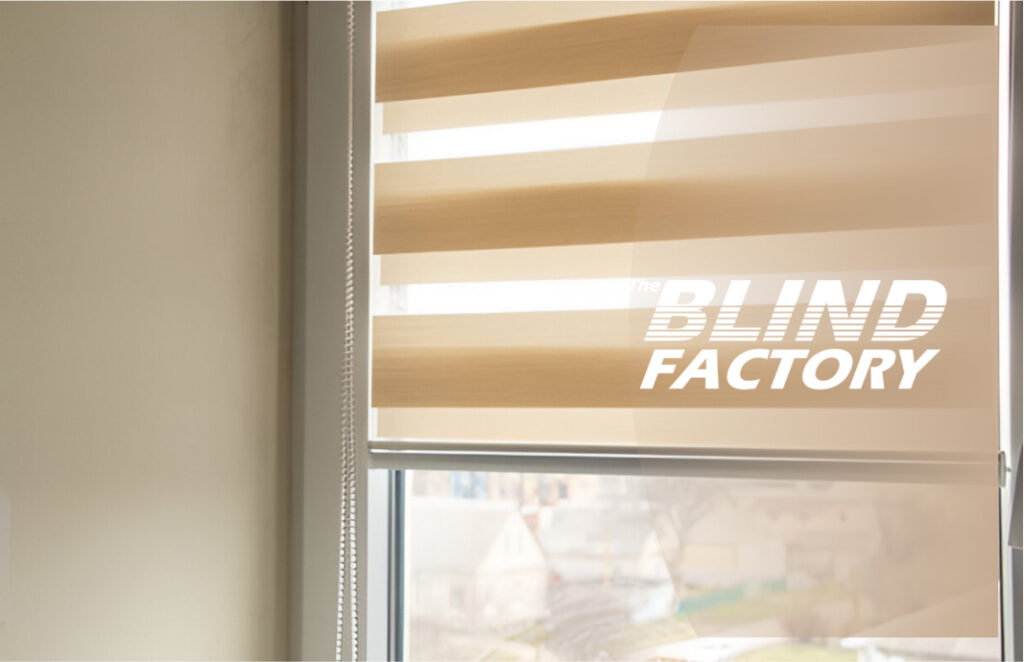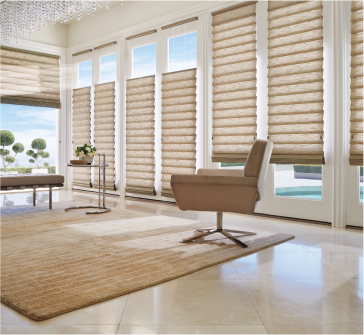When creating an energy-efficient home, window treatments play a crucial role. Transitional shades, with their blend of sheer and opaque fabrics, offer homeowners a stylish and versatile solution for managing light, improving insulation, and reducing energy costs.
We’ll explore the top reasons why transitional shades are a must-have for any energy-conscious home.

What Are Transitional Shades?
Transitional shades, also known as zebra shades or dual-layer shades, are a modern window treatment that has both sheer and opaque fabric in horizontal stripes. This design gives you total control over natural light and privacy. The sheer parts let in soft filtered light, while the opaque parts block out light for total privacy and sun protection.
By adjusting the fabric layers, you can control how much light gets in and how visible the inside is from the outside. When the opaque layers overlap, the shades provide full coverage, blocking out the sun and providing privacy. When the sheer layers are aligned, they allow more natural light in, reducing the need for artificial light while still giving you some privacy. This flexibility makes transitional shades an energy-efficient and stylish option for any home.
7 Reasons Transitional Shades Are a Must
1. Control Natural Light and Temperature
Transitional shades control natural light, which affects indoor temperature. By adjusting the sheer and opaque layers, you can control how much light enters a room, so in the summer, you can reduce heat gain. In the winter, you can keep the opaque layers closed and reduce the need for heat. This temperature control reduces the load on your HVAC systems and lowers your energy bills and home heating and cooling.
2. Insulation and UV Protection
The dual-layer design of transitional shades adds insulation and keeps homes cooler in the summer and warmer in the winter. The opaque layers block heat transfer through the windows, making the home more energy efficient. Plus, the UV protection prevents damage to furniture, flooring, and decor, extends the life of interior elements, and reduces the need for replacements.
3. Light Control
One of the best things about transitional shades is you can have precise light control without sacrificing energy efficiency. Homeowners can adjust the opacity to let natural light in or block it out completely, depending on their needs. This reduces the need for artificial light during the day and lowers energy consumption. You can transition from privacy to openness with just a flick of a switch.
4. Sustainable and Eco-Friendly Design
Many transitional shades are made with sustainable materials and eco-friendly manufacturing processes, so they are a responsible choice for environmentally aware homeowners. Homeowners can reduce their environmental footprint by choosing shades made from recyclable or low-impact materials. Plus, their energy efficiency aligns with eco-friendly home designs that aim to reduce energy waste and carbon emissions.
5. Aesthetic Appeal and Functionality
Transitional shades offer energy-saving benefits and also enhance the overall look of a home. Available in many styles, colors, and materials, they complement energy-efficient home designs and add a touch of modern sophistication. In terms of functionality, they are easy to use and adapt to different lighting needs, making them a versatile choice for homeowners who want style and practicality. This combination of looks and energy efficiency can also increase the value of your home.
6. Block Glare Without Blocking Views
Transitional shades allow you to block glare from direct sunlight without blocking the view. The sheer sections of the shade diffuse harsh sunlight, making indoor spaces more comfortable without darkening the room. So you can have natural light without the glare, and there is no need for energy-sucking window treatments like blackout curtains.
7. Longer Life of HVAC Systems
By reducing the load on HVAC systems through better light and temperature control, transitional shades help extend the life of your heating and cooling systems. When rooms are at a consistent temperature, thanks to these shades’ insulating and light-filtering properties, HVAC systems don’t have to work as hard to be comfortable. This means less maintenance and longer life of expensive home systems, more long-term energy efficiency, and cost savings.

How to Pick the Right Transitional Shades for Your Home
Choosing the right transitional shades for your home means considering several things: your home’s design, energy efficiency goals, and budget. Here’s what to look at:
Match Shades to Your Home’s Style
Transitional shades come in many colors, materials, and patterns, so they can work with any home design. For a modern or minimalist look, go for neutral tones like whites or grays. If your home has a more traditional feel, go for richer colors or textured fabrics that add warmth. Make sure the shades match your overall interior style while giving you light control and energy efficiency.
Energy Efficiency First
If energy savings are your top priority, look for transitional shades with enhanced insulation and UV protection. Some have specialized coatings or thicker opaque layers for better thermal control, keeping your home cooler in the summer and warmer in the winter. Choose shades with high energy efficiency ratings to maximize your utility savings.
Light Control Flexibility
Think about how much light control and privacy you need in each room. For living spaces or offices where you want lots of natural light but minimal glare, go for shades with more sheer fabric sections. For bedrooms or media rooms where privacy and light blocking are key, go for shades with more opaque sections to create a dark, cozy space.
Budget and Long-Term Savings
Transitional shades vary in price depending on materials, brand, and customization options. High-end shades may have a higher upfront cost, but their energy-saving features can save you money in the long run. Set a budget but consider the cost-efficiency balance. Investing in durable energy, efficient shades can be cost-effective in the long run.
Motorized or Smart Shades for Convenience
For extra functionality and energy management, consider motorized or smart transitional shades. These can be automated to adjust based on time of day, room temperature, or even weather conditions to optimize energy efficiency without having to lift a finger. While these options may be more expensive, the convenience and extra energy control may be worth it.
Related Article: Blinds vs. Shades vs. Shutters: Which is Best for Your Space?
Elevate Your Home’s Energy Efficiency with Transitional Shades
Transitional shades are a smart investment for any homeowner looking to improve energy efficiency while enhancing the look and feel of their home. Their ability to regulate light, insulate against temperature changes, and offer a modern design makes them ideal for reducing energy usage without sacrificing comfort or style. You can enjoy long-term savings and a more sustainable, eco-friendly living space by choosing the right shades for your needs. Take the first step toward a more energy-efficient home today!

